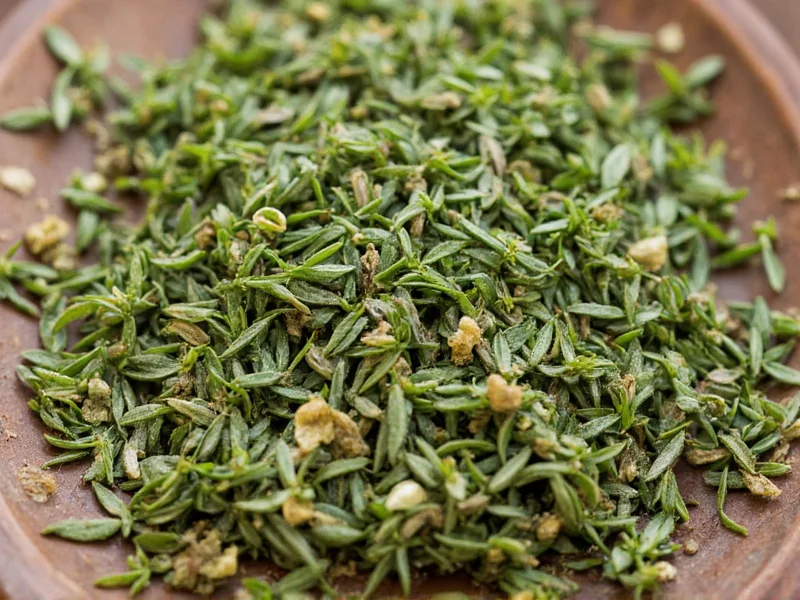Thyme's complex flavor profile makes it one of the most versatile herbs in the culinary world. Understanding its taste characteristics helps home cooks and professional chefs alike create balanced, flavorful dishes that showcase this herb's unique qualities.
Understanding Thyme's Flavor Components
Thyme contains thymol, the compound responsible for its distinctive aroma and taste. This aromatic herb delivers multiple flavor dimensions that work together to enhance various dishes:
- Earthy base - Provides a grounding quality that complements root vegetables and meats
- Lemony brightness - Adds freshness without actual citrus
- Floral undertones - Contributes subtle complexity to sauces and reductions
- Minty coolness - Offers a refreshing counterpoint to rich ingredients
- Peppery finish - Gives dishes a gentle warmth that builds gradually
When evaluating what does thyme taste like, consider that its flavor intensity varies based on growing conditions, harvest time, and preparation method. French thyme (Thymus vulgaris) offers the most balanced flavor profile, while lemon thyme provides more pronounced citrus notes that work beautifully with fish and poultry.
Fresh vs Dried Thyme Flavor Comparison
Understanding the difference between fresh thyme and dried thyme flavor is crucial for recipe success. The drying process concentrates certain compounds while diminishing others, creating distinct flavor profiles:
| Characteristic | Fresh Thyme | Dried Thyme |
|---|---|---|
| Flavor Intensity | Milder, more delicate | More concentrated (use ⅓ less) |
| Primary Notes | Lemony, floral, grassy | Earthy, woody, slightly bitter |
| Best Applications | Garnishes, finishing, delicate sauces | Long-cooked dishes, stews, braises |
| Storage Life | 1-2 weeks refrigerated | 6-12 months in airtight container |
Optimal Culinary Applications for Thyme Flavor
Thyme's flavor pairing guide reveals why it's a staple in professional kitchens. This herb works particularly well with:
- Poultry dishes - Complements chicken and turkey without overwhelming their delicate flavor
- Roasted vegetables - Enhances root vegetables like potatoes, carrots, and parsnips
- Tomato-based sauces - Balances acidity while adding complexity
- Bean and lentil dishes - Provides earthy notes that complement legumes
- Fish preparations - Lemon thyme varieties pair exceptionally well with seafood
For those exploring how to use thyme in cooking, remember that whole sprigs added early in the cooking process infuse dishes with subtle flavor, while chopped leaves added near the end provide more pronounced thyme flavor notes. When creating a thyme flavor pairing guide for your recipes, consider that this herb works particularly well with garlic, rosemary, and sage in the "holy trinity" of French herbs known as bouquet garni.
Common Thyme Flavor Mistakes to Avoid
Even experienced cooks sometimes misuse thyme. Understanding thyme flavor profile helps prevent these common errors:
- Overusing dried thyme - Its concentrated flavor can become bitter if used excessively
- Adding fresh thyme too late - Needs time to release oils in cooked dishes
- Using old, stale thyme - Dried thyme loses potency after 6 months
- Not removing tough stems - Can impart unpleasant bitterness to dishes
- Mixing varieties incorrectly - Lemon thyme doesn't substitute well in all applications
When determining thyme substitute flavors, consider oregano for Mediterranean dishes (use half the amount) or marjoram for a milder alternative. For French cuisine applications, a combination of equal parts rosemary and savory often provides the closest approximation to authentic thyme flavor characteristics.
Maximizing Thyme's Flavor Potential
To get the most from thyme's distinctive taste, try these professional techniques:
- Dry rubs - Combine with salt, pepper, and garlic powder for meats
- Infused oils - Steep sprigs in olive oil for salad dressings or bread dipping
- Vinegar infusions - Create flavorful bases for marinades
- Compound butter - Blend with softened butter for finishing proteins
- Stock enhancements - Add to homemade broths for deeper flavor
Understanding the complete thyme flavor profile allows cooks to use this herb strategically rather than randomly. Whether you're exploring what does thyme taste like for the first time or refining your culinary technique, this herb's versatility makes it worth mastering. Remember that thyme's flavor develops gradually, so patience yields the best results in your cooking.











 浙公网安备
33010002000092号
浙公网安备
33010002000092号 浙B2-20120091-4
浙B2-20120091-4